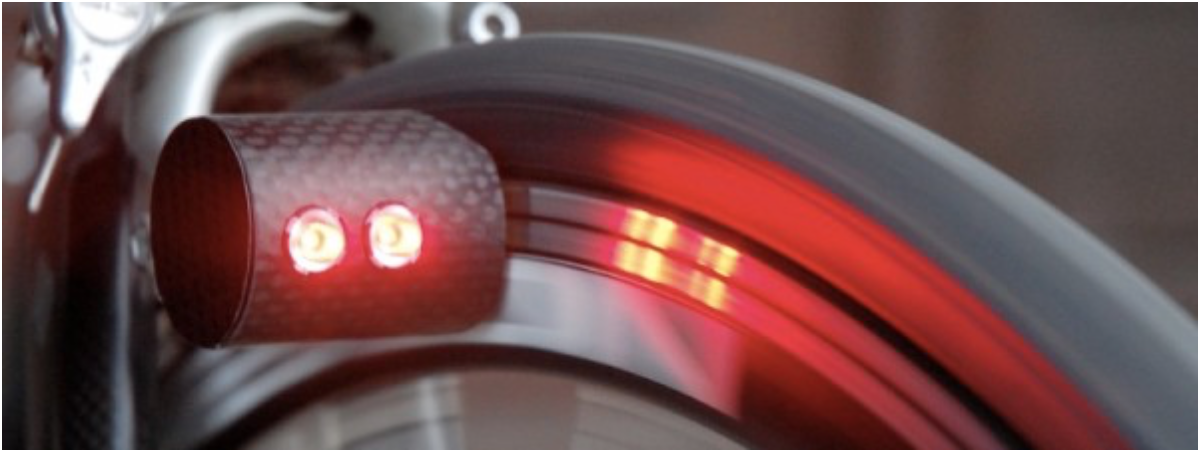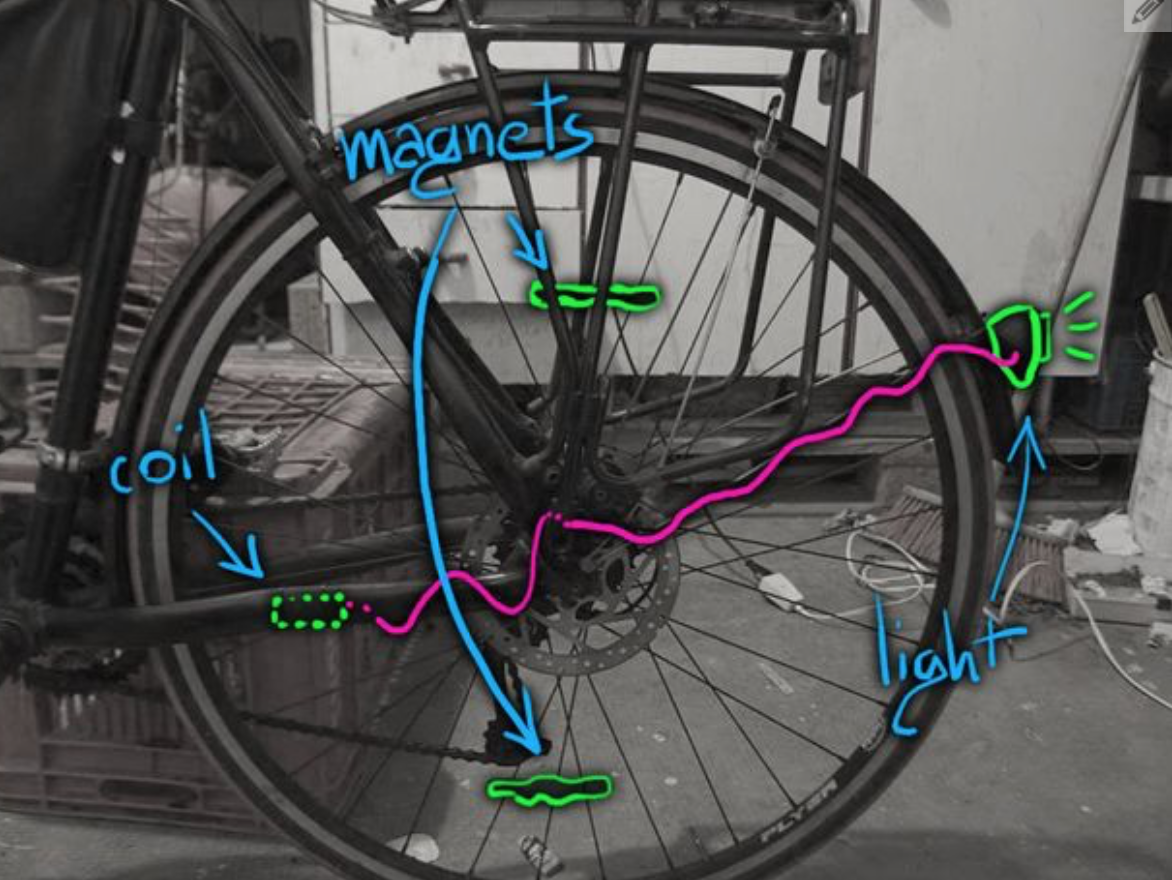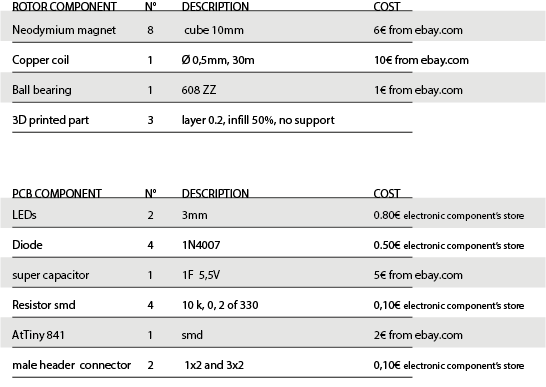Week 17 - Applications and Implications
Propose a final project.
Steps:
* What will it do?
* Who's done what beforehand?
* Materials and components (where will they come from?how much will it cost?)
* Parts, systems and process
* Tasks need to be completed
* Questions need to be answered
* Schedule
What will it do?
Every biker need a safety light.
You can buy a light with battery, but who remember to switch it off at the end? You will use all
the battery in a month. So you can use an old dynamo, but the friction between the gear and the wheel makes harder your ride, you can also
forget to connect it.
The strange thing is that the consumerism has clouded our vision and made us forget some of
the most precious relations of our era: electromagnetism! Why we have to buy a battery to power a light when we are moving? We
waste a lot of energy. Harvesting energy should be a roule for designers. Eaven milliwatt are important; accumulating
through the capacitors and converting them to different voltages, via step-up converters, we can storage a lot of free green energy
I want to create a light who switch on when you start moving and remains turned on even when you're stopped at lights. It turns off by
itself when leaves stopped. The electromagnetism is necessary to minimize the frictions and allow the user to leave it running continuously.
Who's done what beforehand?
Big companies as Linear Technology, Maxim Integrated Products,
Texas Instruments, are investing in this type of product. I decide to create
something like Batteryless TV remote control from Philips and Arveni sas: easy and useful.
I found some project about it, but no one with a capacitor witch can storage the energy and take you safety even if you are not moving.
Thomas C. Bozic and Mason Stone from University of Colorado, make a Contact Free Bicycle Safety Light

Dirk Strothmann, make MAGNIC LIGHT. Successfully raised on Kikstarter.

On instructables there is a lot of smart project, as te tom4zs's one, who made Bike wheel induction safety light.

Alex Pop made 3D printed Bike light (rear) without battery.

stonioni made Magnetic induction safety bike lights.

Materials and components

Parts, systems and process
Electromagnetic induction is the creation of potential difference (voltage) through a conductor when it is exposed to a varying
or moving magnetic field. Faraday discovered this in the course of several famous experiments I will not detail here. This effect
can be demonstrated with a simple coil of fine copper wire and a magnet, but that's not nearly as interesting as building a device
that will generate electricity, charge almost any type of battery, light up a bright LED, and look cool while doing it. You can
find more detail in the Principles involved chapter of my final project.
The goal is to create
a single object, easy to install. This object will be composed by a rotor, a custom PCB that light up 2 leds and a 3D printed
carter that contain put everithing on the right position.
Tasks need to be completed
- First of all, I should obtain energy from my rotor and I have to analyze the wave that I create in order to put the right components on
my PCB.
- Than I have to program and test my PCB.
- At least I have to create a carter that contain my project's elements in the right position.
Questions need to be answered
How long should my copper wire be long? How many turns of it to create a good rotor?
Schedule
I decided to minimize the diameter of my copper wire and to improove the turns in order to create more energy.
Once I know
something more about the energy I create, I'll redesign my PCB and I'll test if my super cap works.
Than I'll design
the project cover that will be 3D printed and if necessary, rinforce it wit the composit trick (look at
Stefano Paradiso components' assigment)
RETURN UP
| ← week 16 / Interface and Application Programming | week 18 / Invention, Intellectual Property, and Income → |
|---|
